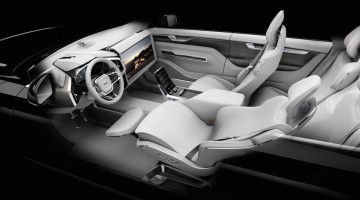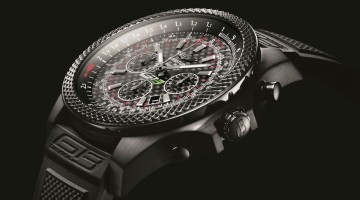Competitive power figures are important, especially for Volvo‘s top of the range T6 petrol engine. Though across the Drive-E petrol board starts from 140hp, the T6 produces in excess of 300bhp, thanks to new thermal management (which also optimises temperature in the cabin) and the ‘superturbo’ setup. While the supercharger optimises low-end torque, the turbocharger takes over at 3500rpm for top end performance. It’s a system put to similarly good use by the Volkswagen Group, whose 1.4-litre TSI twincharger engine won the Engine of the Year award in both 2009 and 2010.
Top of the list however was fuel efficiency, inputs from across the board (including forged steel crankshafts, controlled piston cooling, a compact catalyst system and various other technical terminology that leave my eyes glazed) producing a best in-class 3.9L/100km reading for the T6. One neat touch was the inclusion of minute ball bearings on the camshaft to reduce engine friction, and thus optimise efficiency. Another was a 45kg weight saving: “chop off two cylinders! You have a less heavy engine, then you can take weight off the suspension, and the complete package becomes lighter. So it’s a good spiral.”
The diesel D4 boasts a world first ‘i-Art’ system, which uses pressure sensors to control combustion across the engine’s nine injectors, thus providing more consistent torque. Another was a process called ‘scavenging’, in which inlets and valves are opened at low rpm and fuel residue flushed out with cool air, the engine consequently requiring less fuel at higher revs. Power from an engine, if manufactured intelligently, has nothing to do with size.
“The idea is that if you get enough air and fuel mixture through an engine, you get enough power,” Magnus continues. “And a smaller engine has less friction, consumes less and is a better option than a larger unit. Since we also have the engines transversely mounted, if they are too long then the car becomes too wide when you add electrification and a gearbox. It can be overcome but it becomes more complicated.”
One key word to consider there is ‘electrification’. Volvo’s plug-in hybrid system has been available on the market now for just over a year, and the Drive-E architecture has been prepared for future electrification from the beginning. A smaller engine offers more room in the engine bay for an electric motor and generator, and greater low-end torque and yet further improved fuel efficiency. Add that, and the Drive-E T6 could ‘reach power figures in the V8 territory’. It’s a decisive warning shot to other manufacturers, many of whom have apparently already shown interest in Volvo’s design.
“If you take the T6 with a supercharger and turbocharger, when the supercharger kicks in at low revs you get that naturally aspirated feeling. Then you use the turbocharger to get the high-end performance. Then there’s electrification, which would give you 70bhp extra or so, and instant feeling. But we’ve got, let’s say, a confident four cylinder engine now, and that’s where we want to be right now.”
It’s still early days, but the current three-strong Drive-E family is set to expand to eight within the next year or two, the high-performance T6 and T5 petrol units
to be joined by the more frugal T4 and T3 units, the D5, D3 and D2 units lining up alongside the already launched diesel D4. It’s been a long old struggle for Magnus and the VEA team, but they’re confident that their new Drive-E engine family is a strong step forward for the company. Whether or not Volvo’s claim that the V8 engine will soon be a thing of the past is another matter. That the new four-cylinder Drive-E architecture is something rival companies should be paying attention to is beyond doubt.
– Shots courtesy of Volvo



